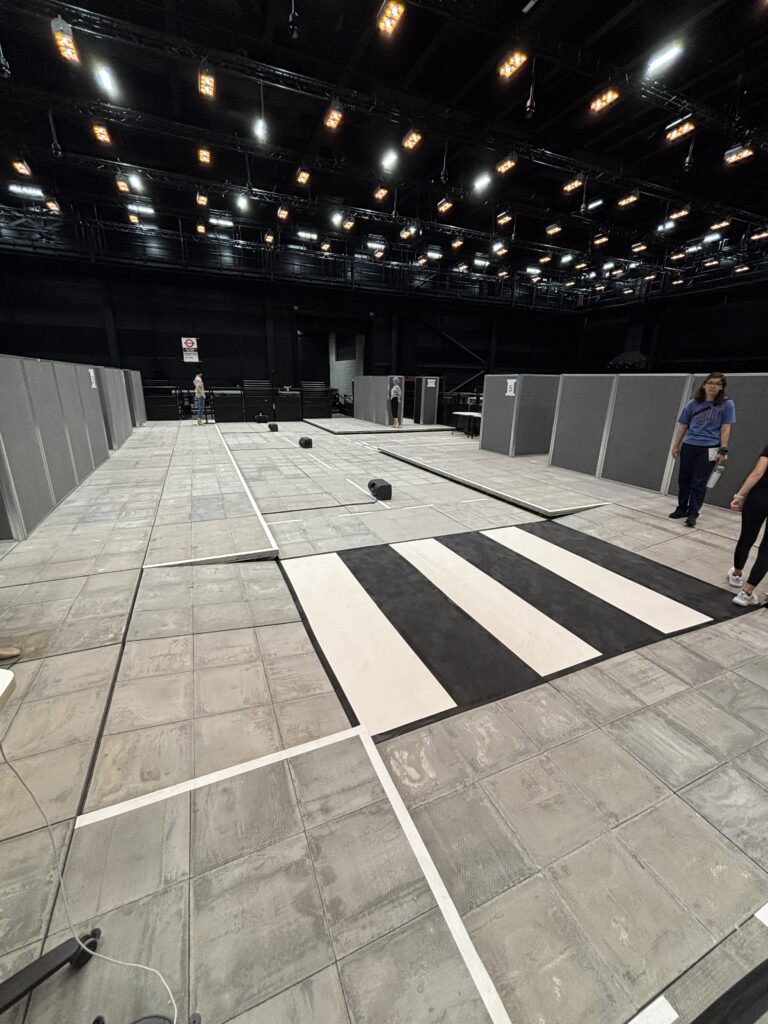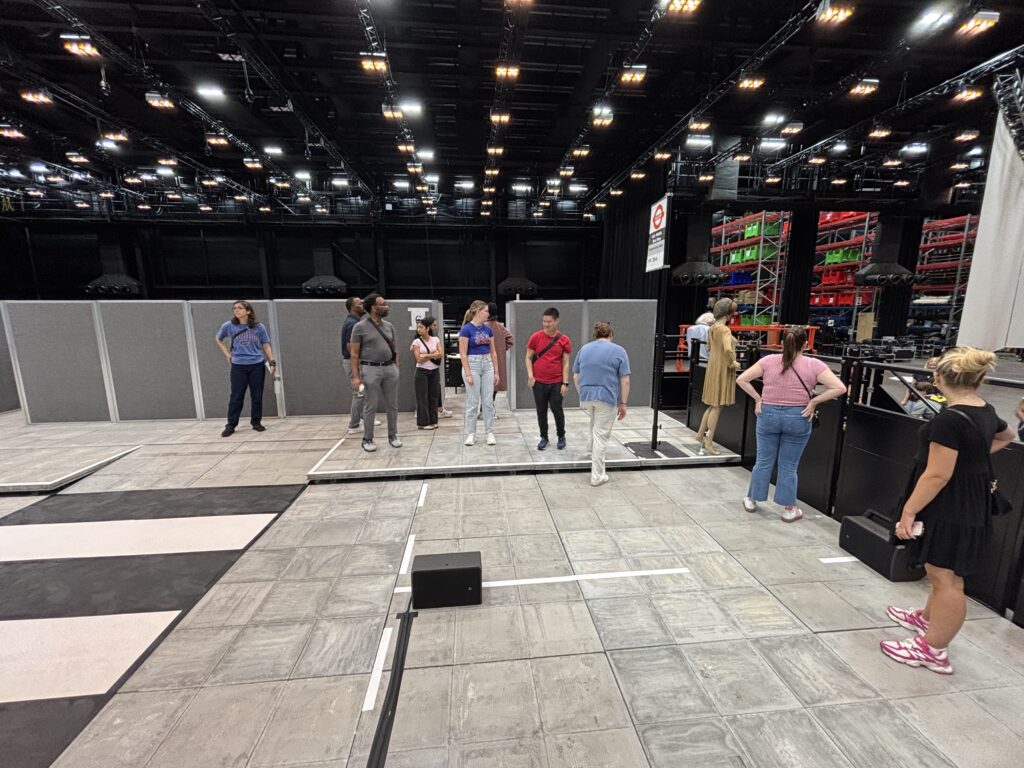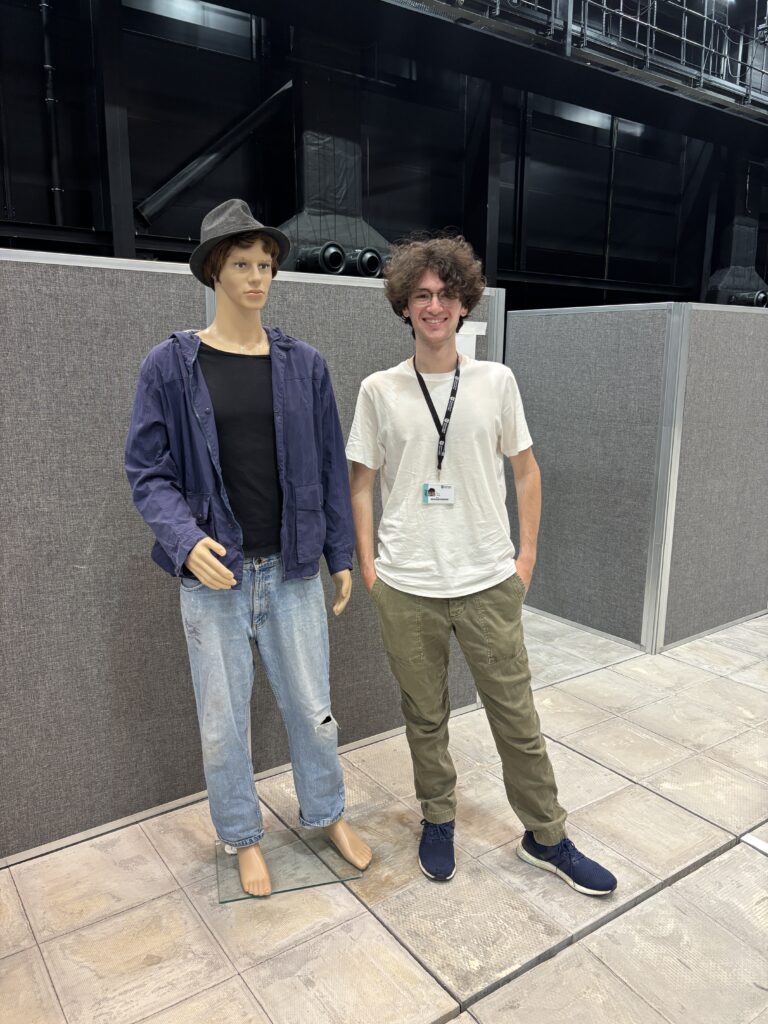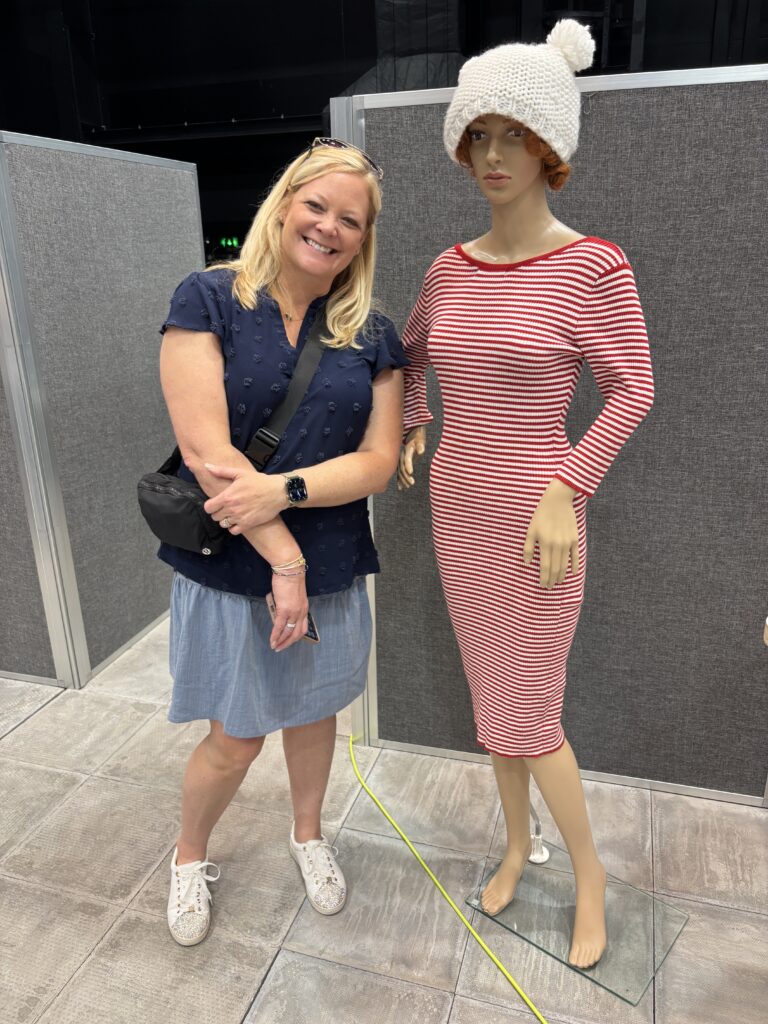Day 1: Sunday
Arrival day at UEL, where people had their first glimpse of the campus and where they’d be staying for the next two weeks. Fortunately, it was a lovely sunny day in London and the university and the surrounding areas were was looking at their best. This is a view as you walk from the accommodation towards the Centre for Sustainability at UEL:
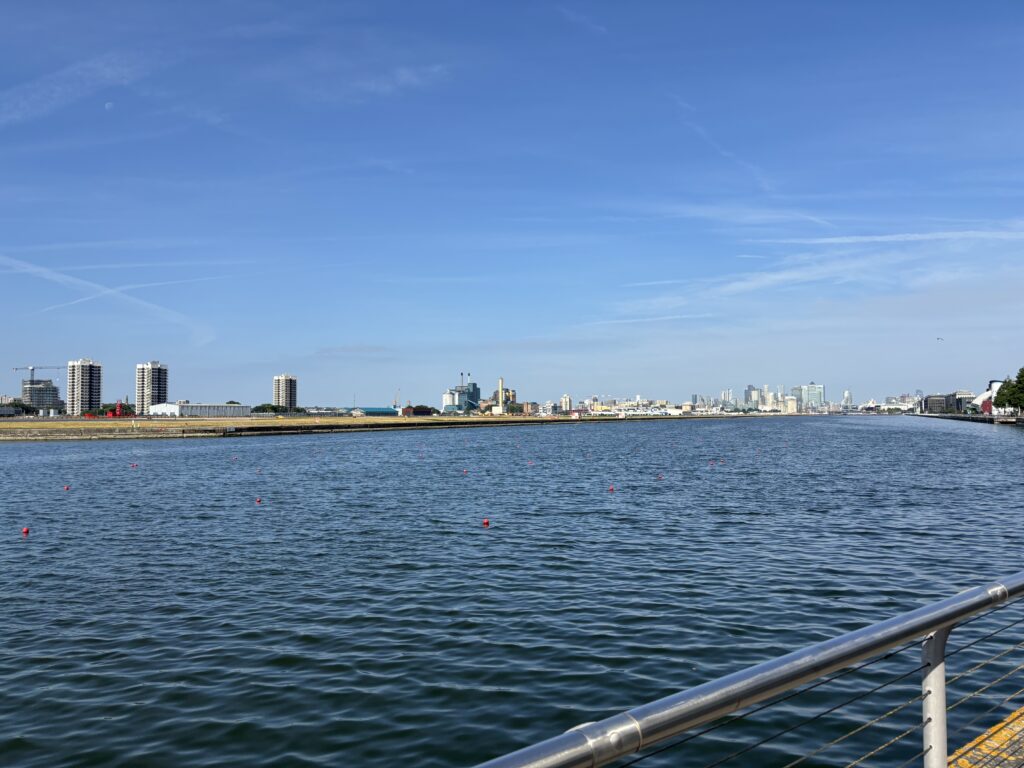
The London City airport is to the left of the image, and you can see (and hear!) aircraft taking off from here.
Day 2: Monday
The Summer School began with introductions from the team, including members of the Rix, and Chris Lawson from Learn International – who gave an introduction to the Summer School, making expectations clear and also general advice about being in London. Students were then given a brief tour of the UEL campus and where you can find the UEL food outlets (most important).
The afternoon session was presented by Michael Barratt, and his associates Winnie Lam and Steven from Transport for London (TfL). The focus of the session was very much on the barriers that people (not only disabled) encounter when travelling in and around London.
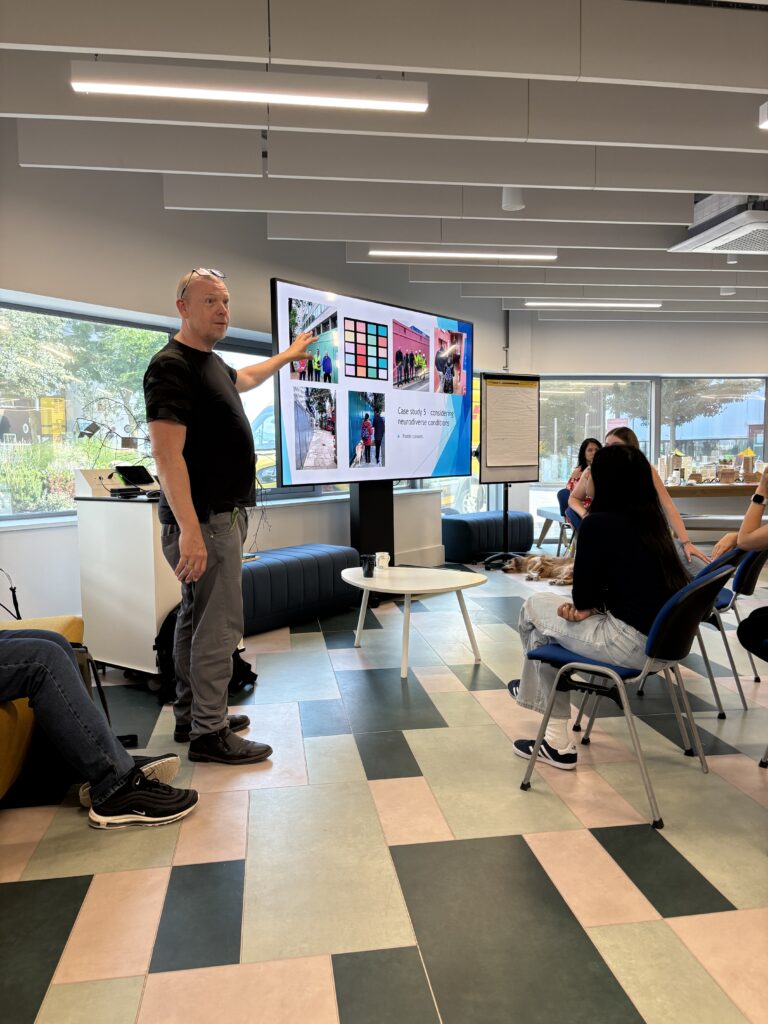
The session with Michael was very interactive and involved most members of the group in some way, usually to illustrate the points he made during the talk. Michael considered signage, use of colour, pedestrian crossings (and poorly placed controls) and many of the mistakes made when attempting to make public areas accessible. This stimulated a great deal of ideas and discussion.
Day 3: Tuesday
Today’s session was given by John Hersov, where he talked about (with the assistance of two associates) peoples’ experiences of using public transport.

In the afternoon we visited the exhibition at the V&A called Design and Disability:
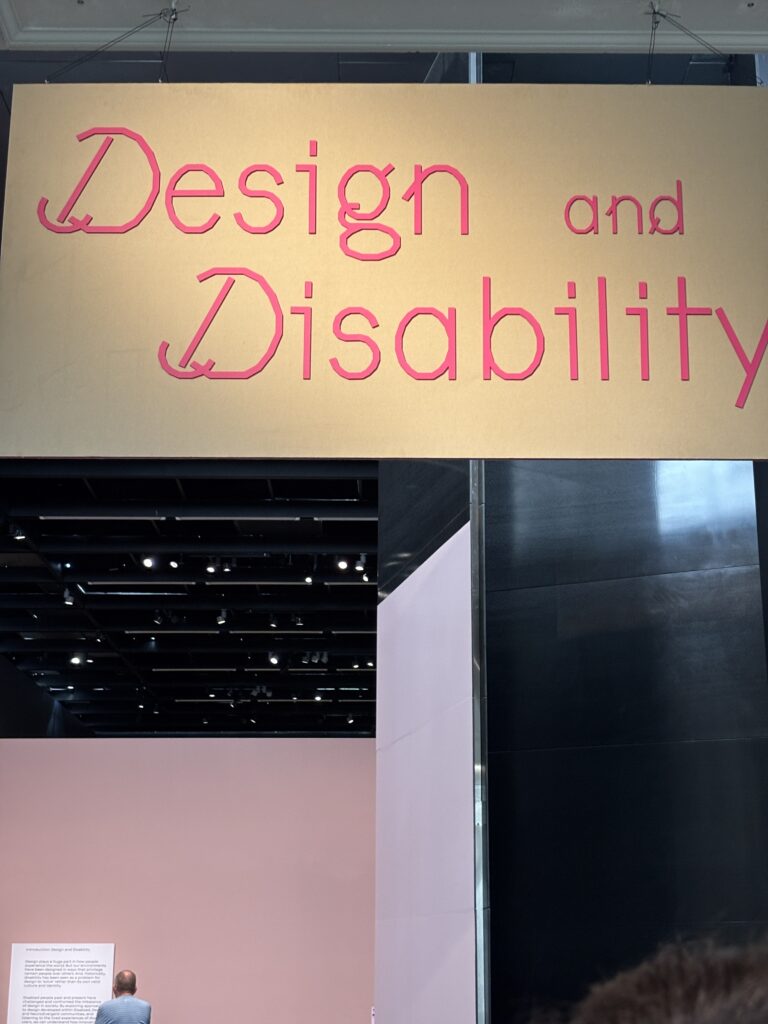
The “Design and Disability” exhibition at the V&A South Kensington celebrates the contributions of Disabled, Deaf, and neurodivergent individuals to design, from the 1940s to the present. The exhibition, features a variety of objects such as jewelery, prosthetics, carnival costumes, and adaptive clothing. It also highlights the work of Disabled designers and activists. The exhibition aims to celebrate disability as an identity and culture through design, and serves as a call to action.
Some of the highlights are shown below:
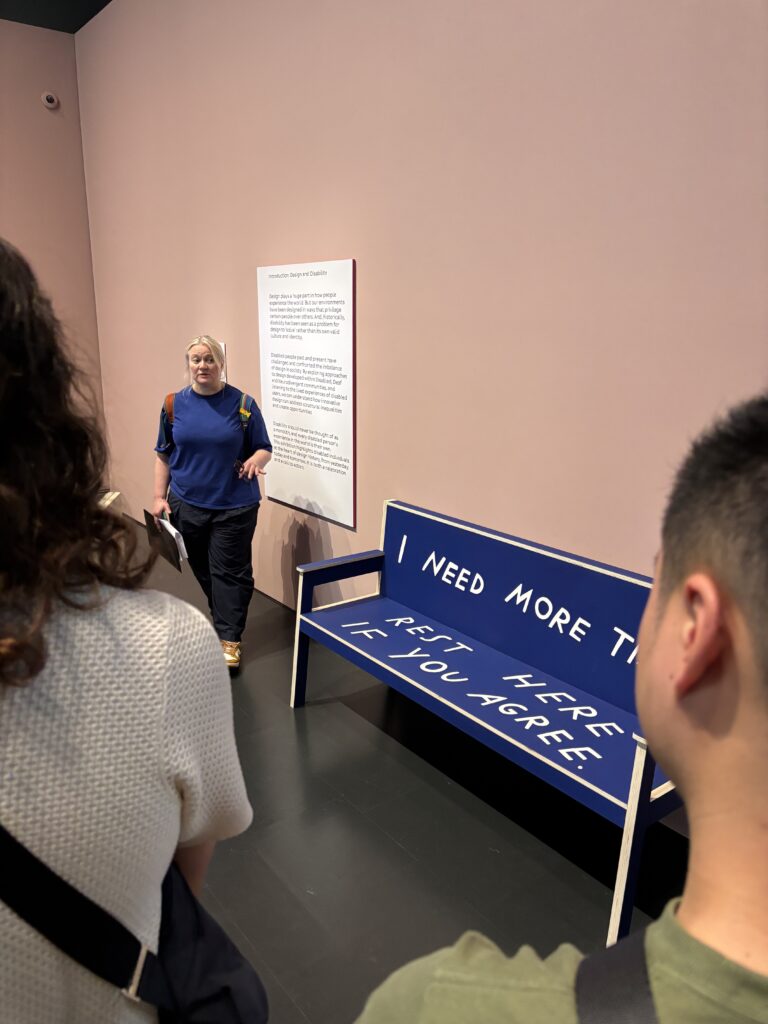
A bench that has the writing “I need more time”, “Rest here if you agree”. There were many comments about this bench and what it represented, and observations about the writing, the colour and how uncomfortable it looks, despite the invitation to ‘rest’on it.
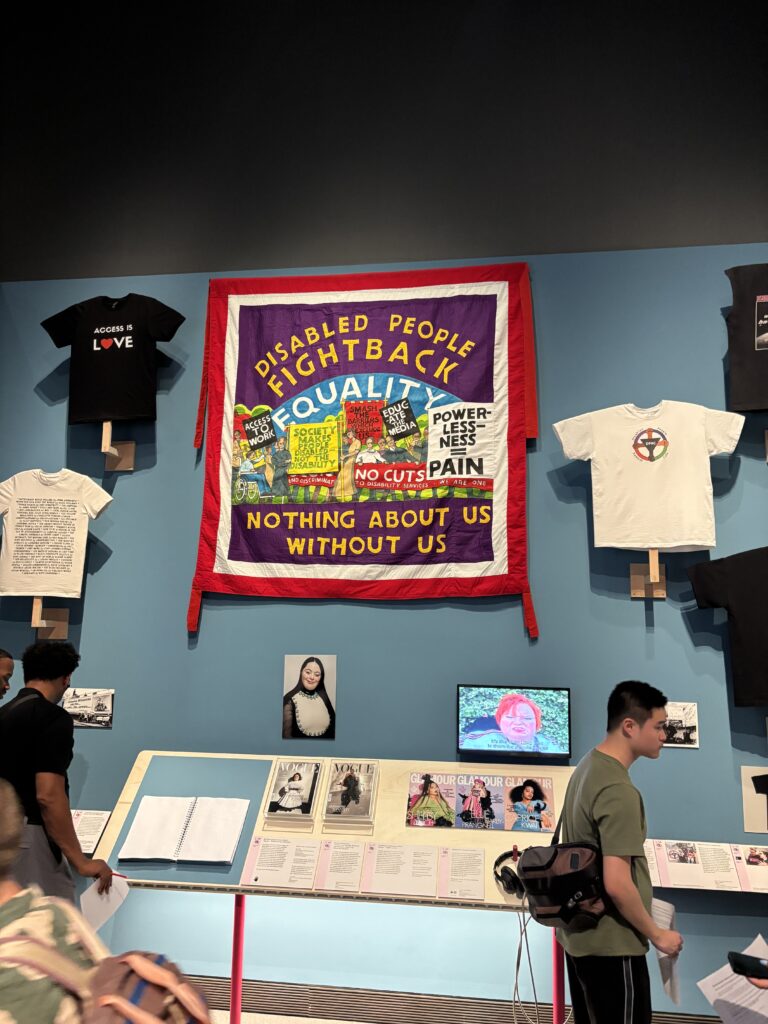
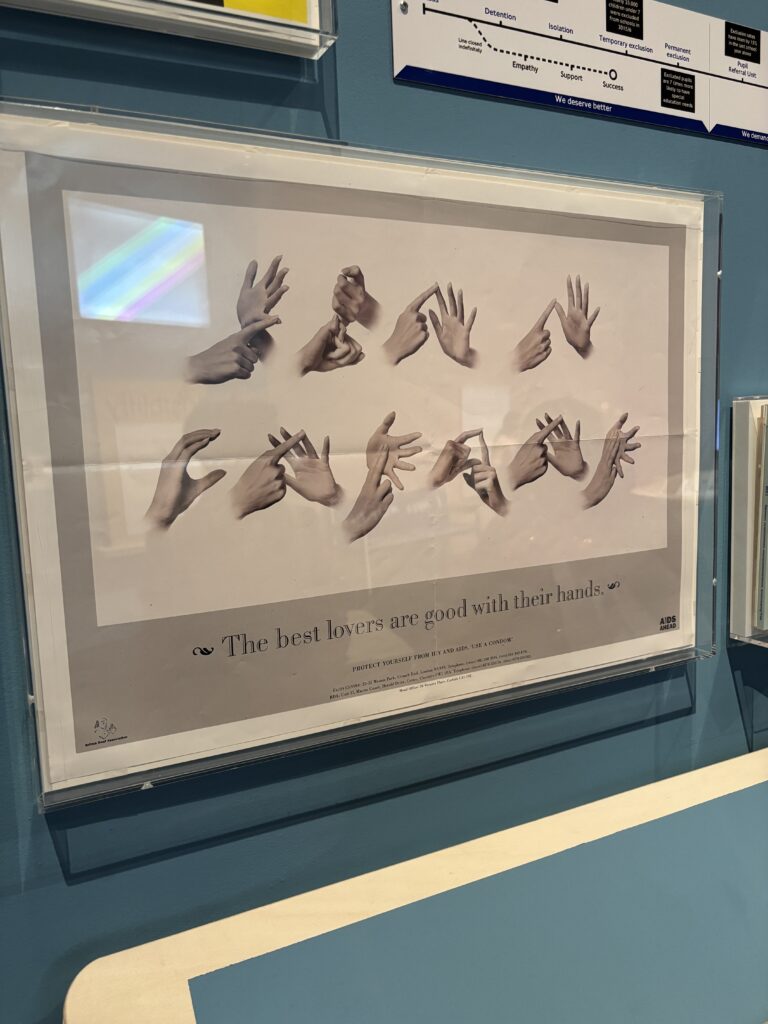
“The best lovers are good with their hands”. The image shows British Sign Language (BSL) and reads “Use a condom”.
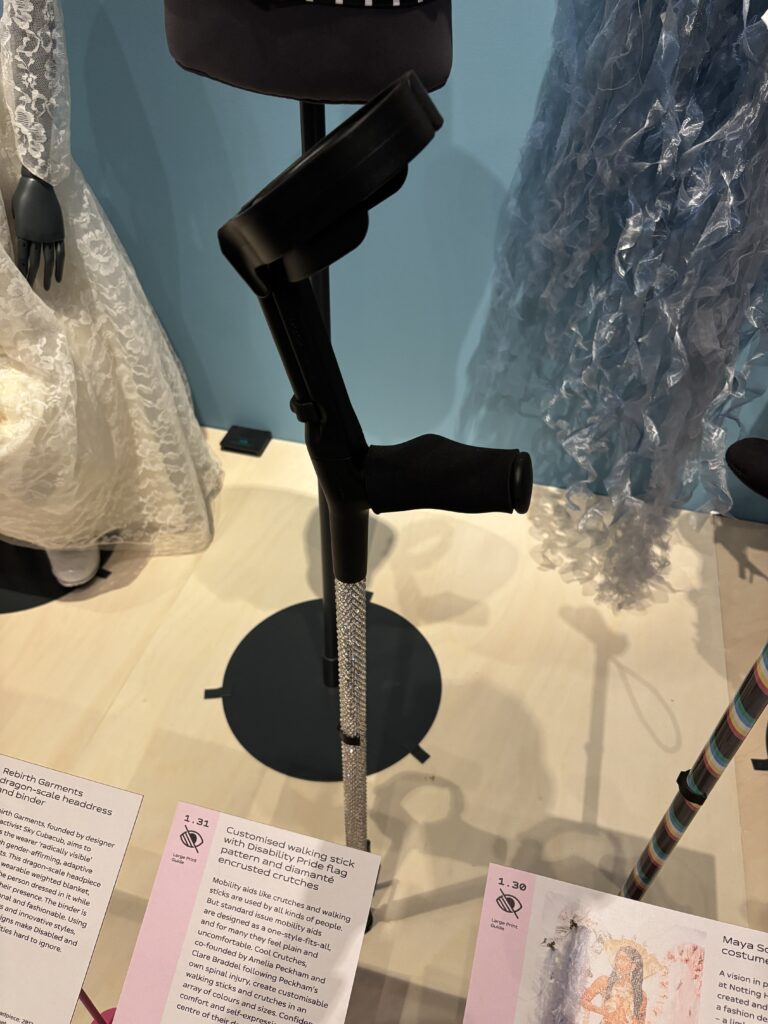
The image above shows a crutch decorated with jewels and what appears to be a suede handle. Next to it, you can just about see a customised walking stick. But why aren’t all walking aids like this?
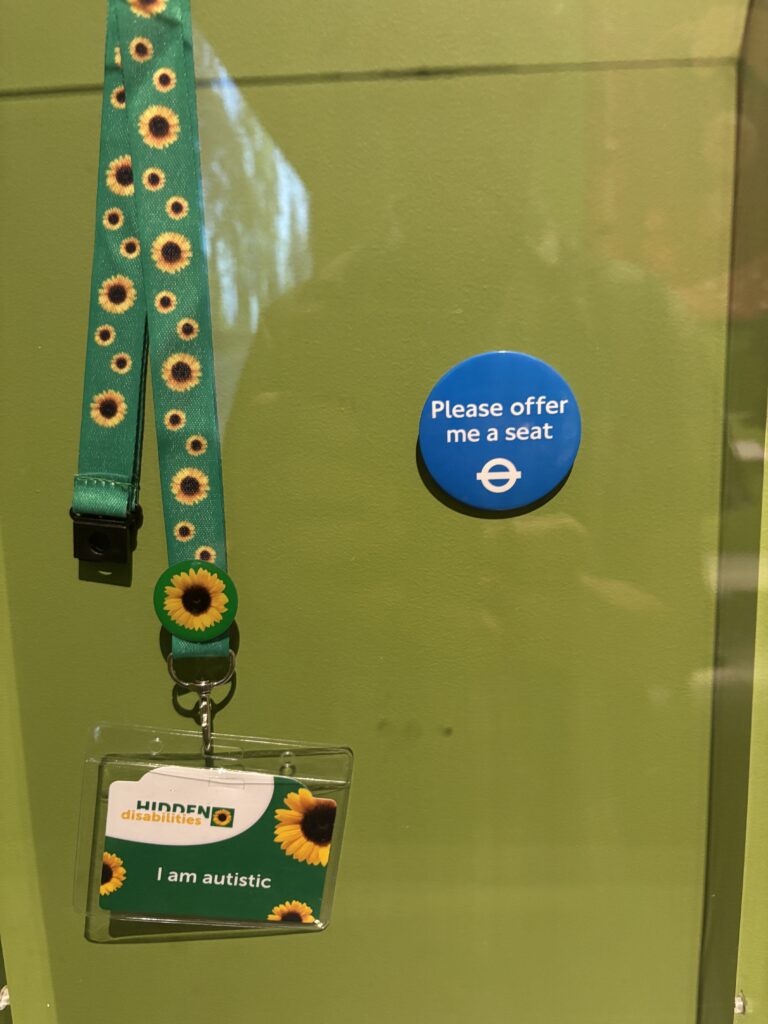
The blue badge shown in the image above was mentioned during the morning session, and can be obtained from TFL.
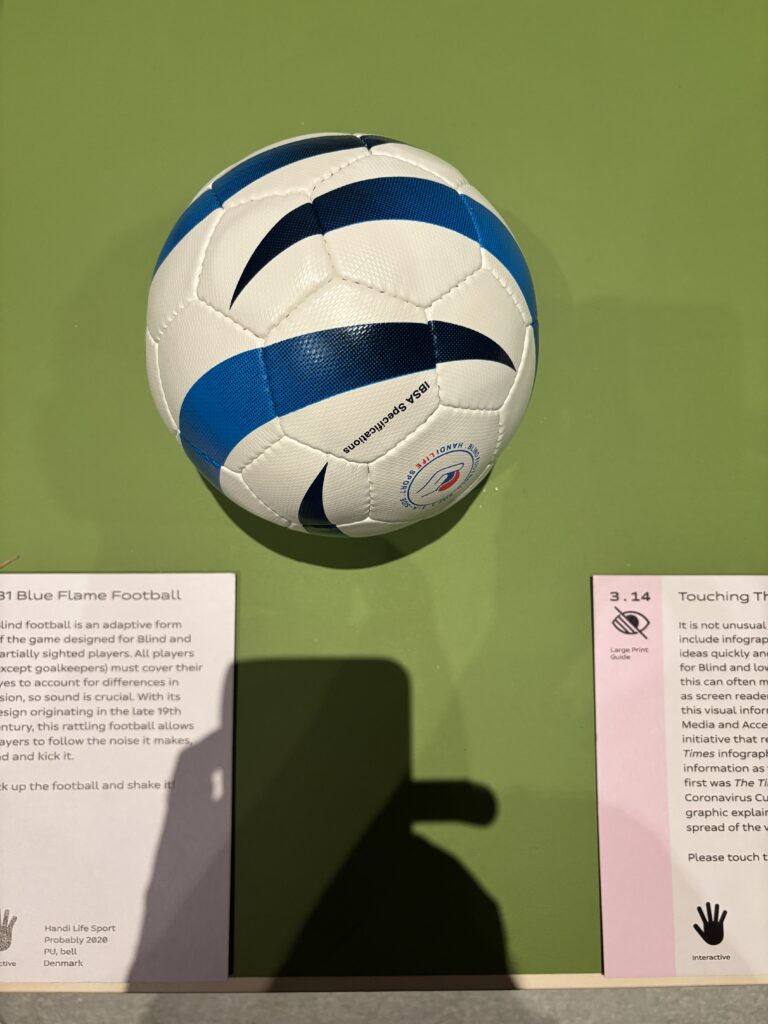
The football in the above image makes a rattling sound when it moves. It is used when playing “blind football” – a game that anyone can play using a blindfold.
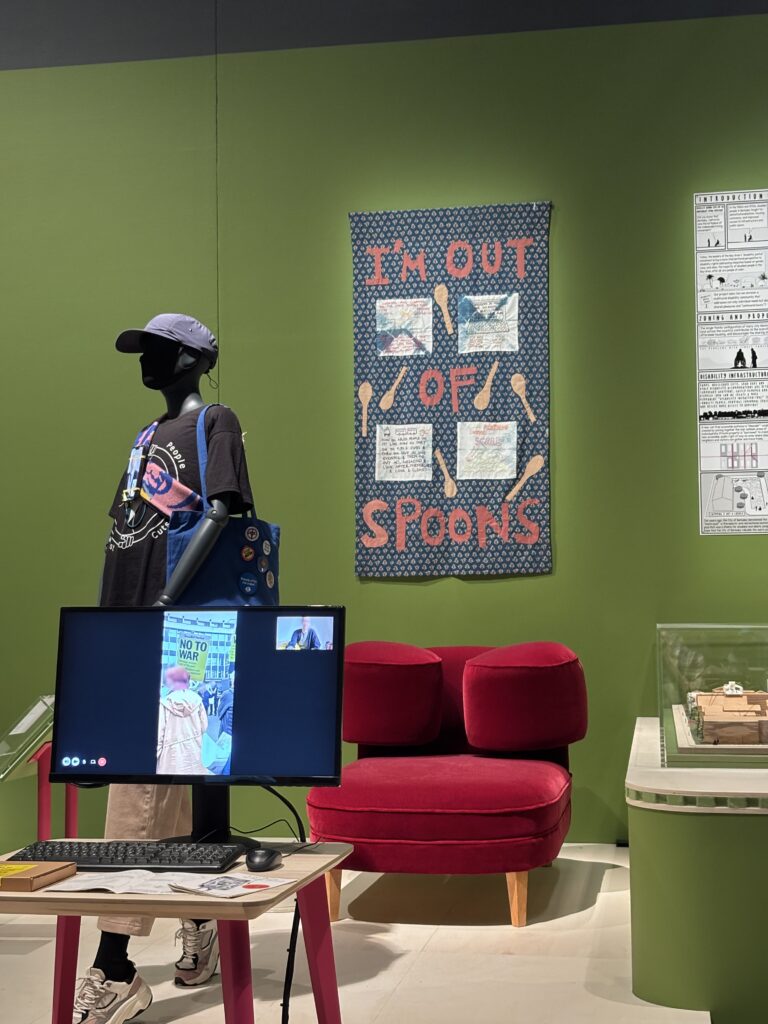
Just where do spoons (especially t-spoons) migrate to?
Day 4: Wednesday – The Hackathon
The Hackathon was the big event of the week, and attracted over 80 people, including one attendee who cam all the way from New Zealand and is pictured below with Craig.
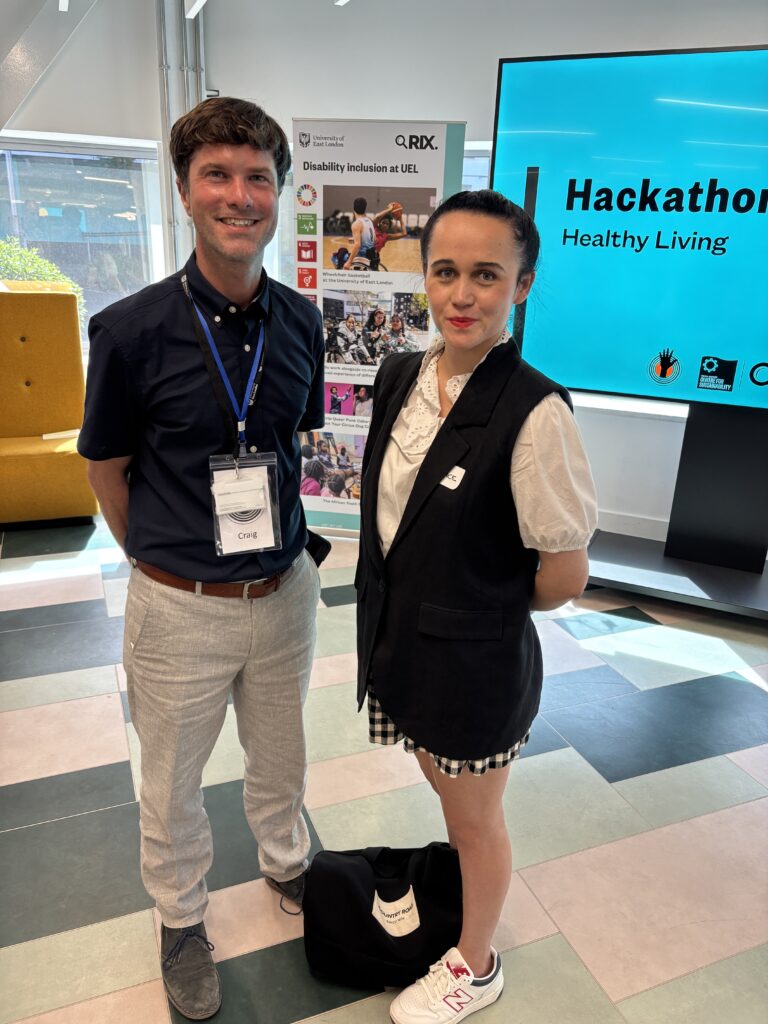
For a summary of the Hackathon day, please visit the post at Rix Inclusive Research
Day 7: Friday – Visit to PEARL
On Friday we visited the UCL PEARL Lab (Person Environment Activity Research Laboratory) at Dagenham. On arrival, you can’t help but to be impressed by the sheer size of the building, which is about the size of an aircraft hangar:

We arrived at the door of the building, which is impressive in itself, and were led into a reception area, where we received a warm welcome.
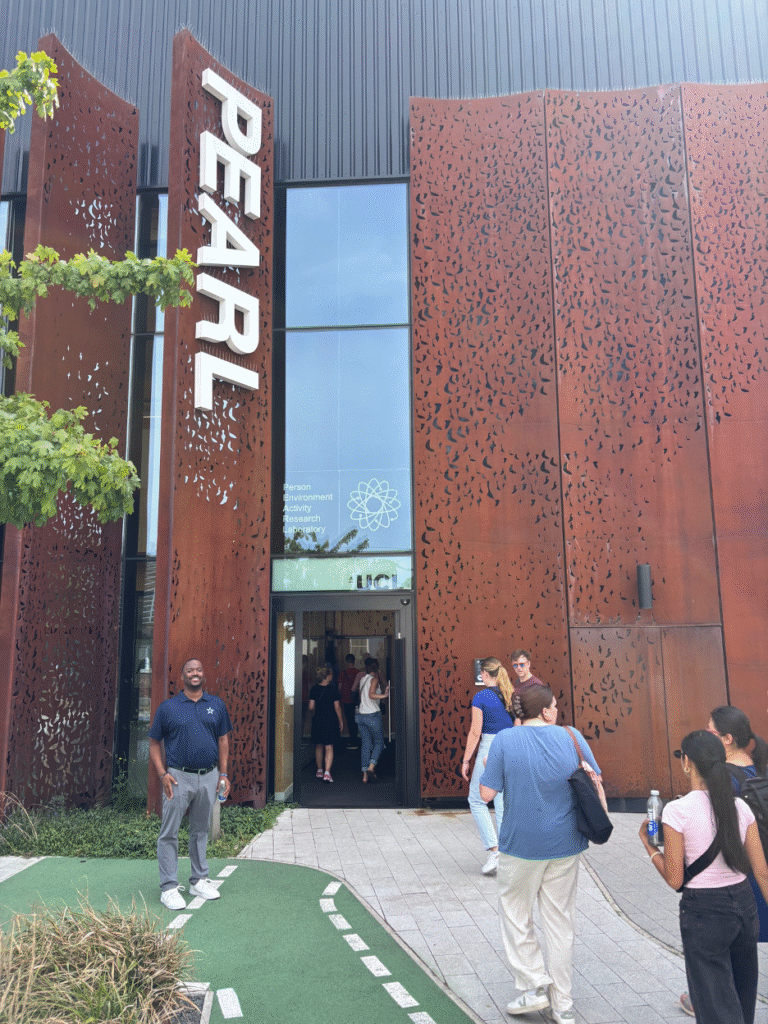
Inside the building, the names of the various spaces have a logic which is not immediately apparent, with names such as “Treble View Riff” and Toolbox, Buzz and Vibe. Even the signs for the toilets were unique (See below).
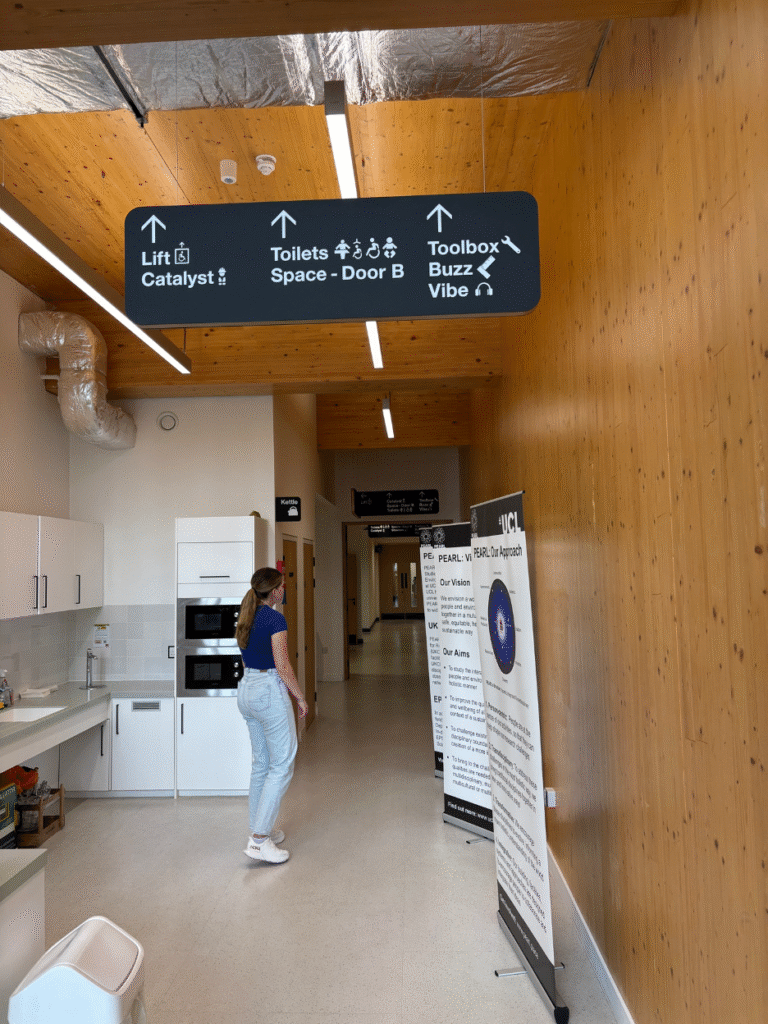
We were given a very interesting introduction to PEARL by Professor Nick Tyler, who told us a little about the history of the lab and how it evolved over the years from a fairly small space, to the gigantic unit that it is now. A memorable anecdote that I recall from the introduction was how red wine can taste better (i.e. the flavour is perceived to be better) when the lighting is changed from white to red.
Inside the main building, the size of the space is fairly breathtaking:

Nick explained that the LEDs lights (over 300 of them in the ceiling) are each composed of 10 separate LEDs, and can be individually controlled for both the colour temperature and hue, as well as the luminosity which ranged from a few lumens to over 5000 lumens.
In the ceiling and along the periphery of the space there were also many speakers, each of which could be controlled individually. This gave an exceptional surround sound …
We were given a demonstration of the audio and lighting system to show just how effective it is in reproducing certain environments, such as an underground station, a busy main road and being in the middle of a thunder and lightning storm. Some of the images below show the lighting effects that were demonstrated.
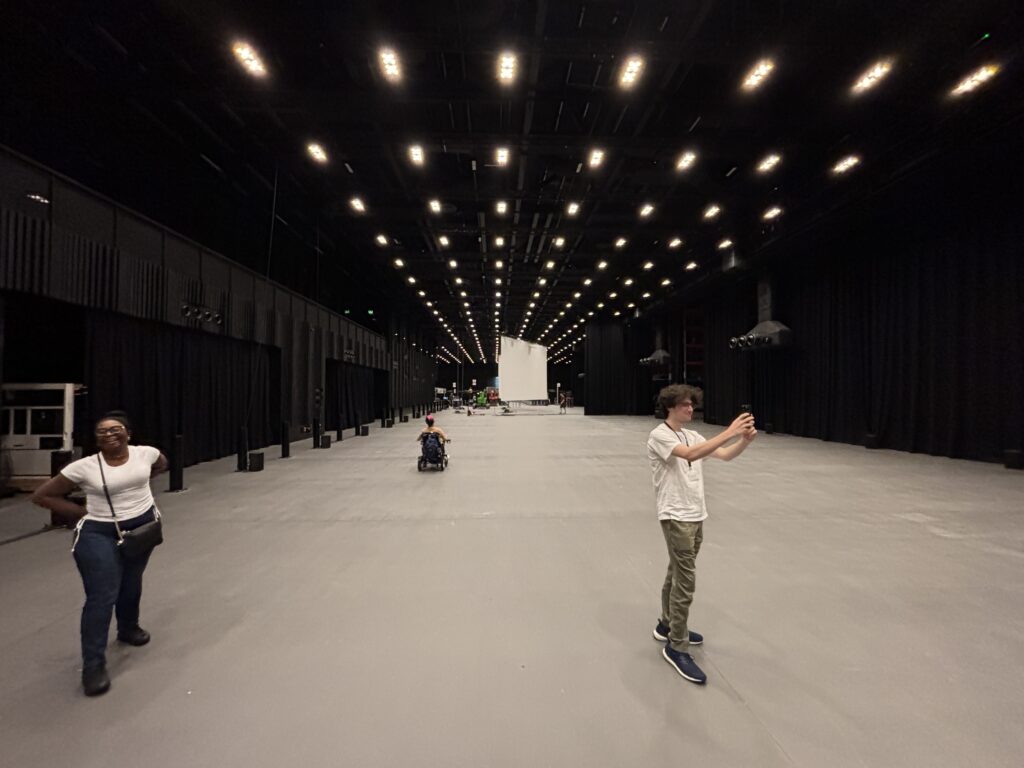
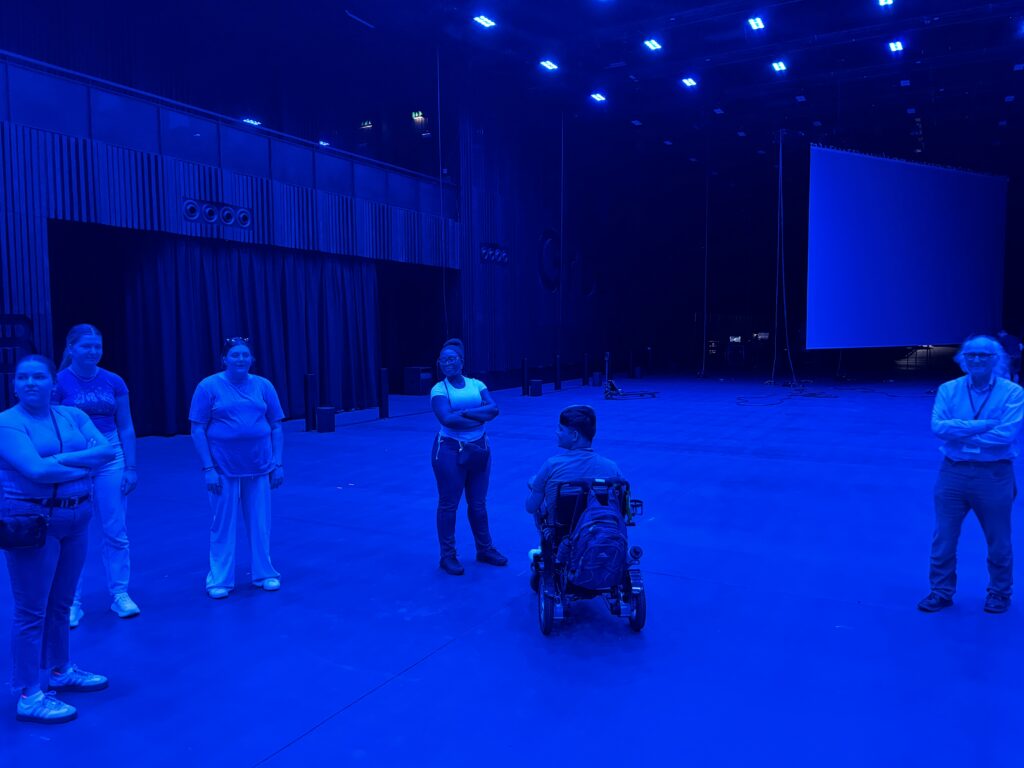

The group were then taken to an partly completed project which was based upon a simple street scene, and comprised of a row of shops with people standing outside. The shops, as explained to us, would be each given different smells and also changes in lighting (and temperature). The project was looking into alzheimers and sensory stimulation.
